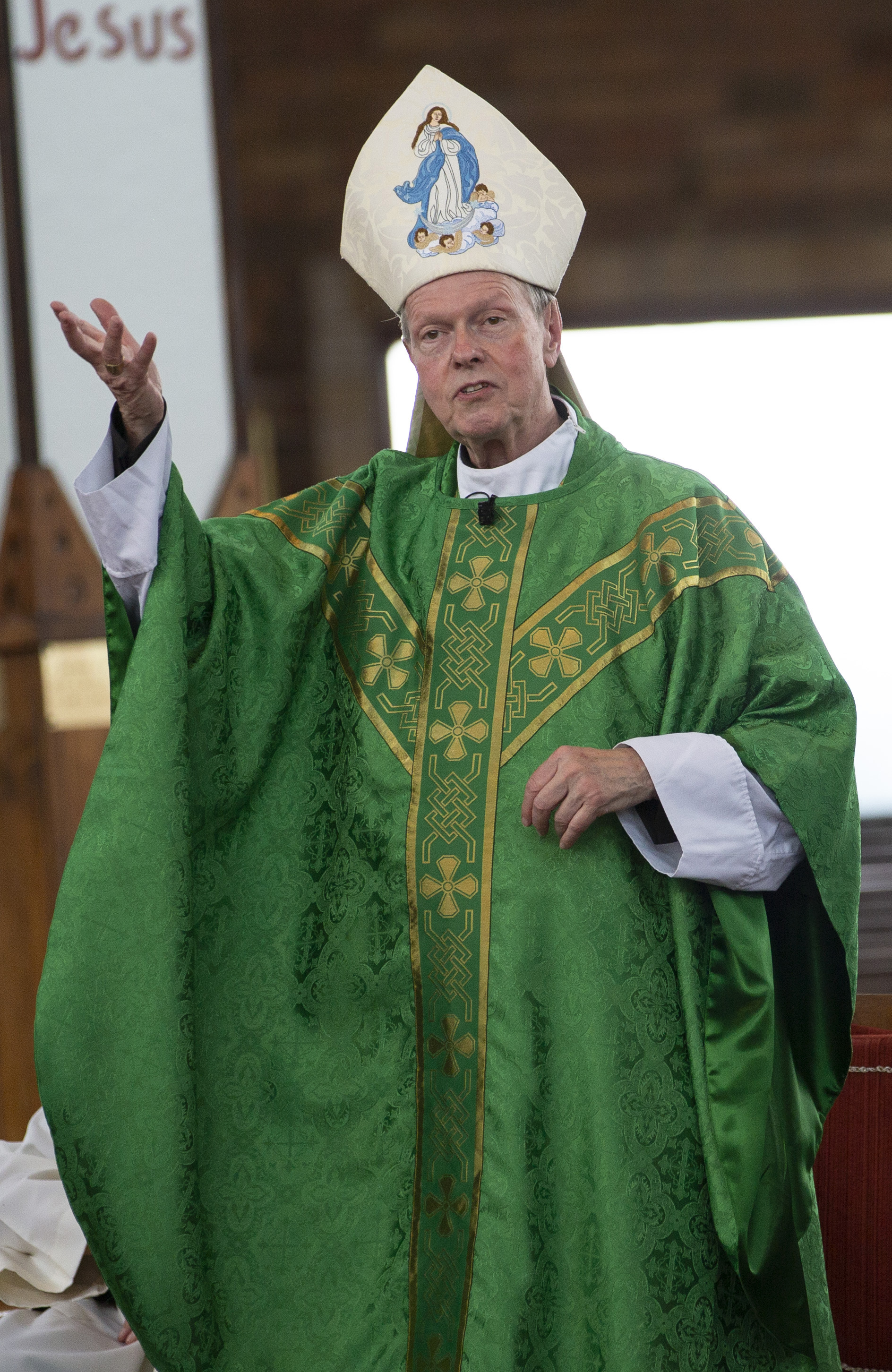December 12, 2018 at 5:42 p.m.
Finding truth in a culture of memes
What’s in a meme? A lot, if it’s a good one. Memes are devices meant to communicate messages, often subliminally, more by image than word. In contrast to the logic and linearity of the reasoned argument, they play on the emotions and the memories they are designed to evoke. Often the intent of the message is aligned with truth, goodness and beauty. Sometimes it is not, and the beholder must work hard to detect the difference.
As comic Stephen Colbert puts it in his parody skit on cable news, “The truthiness is, anyone can read the news to you. I promise to feel the news ‘at’ you.” Unlike the written word which, read, chewed and digested, commands the reader’s active, sometimes reactive engagement, graphic images enter our consciousness unfiltered: they leave their imprint in our mind, swallowed whole, before we can even decide whether it is good for them to be there. It is much easier to stop reading a paragraph or sentence that we do not like than to un-remember an image that has planted itself in our brain.
Who can forget the iconic image of the lone polar bear on an Arctic or Antarctic (I do not recall where or whether we were informed) ice floe — or what appeared to be such. If any meme captured the potentially destructive effects of climate change, it was certainly that one. But was it real? Or, better, what was real? We saw simply a polar bear on an ice floe, but it was meant to say so much more.
Mind you, I am not talking about — let alone discussing, defending or disputing — a canon of climate science here. Instead, what I am suggesting is that this polar bear meme had nothing at all to do with climatology, global warming or the status of polar bears. But we are all susceptible, are we not, “to argument by animal”? Something tugs at the heartstrings when we see a fluffy friend, with doleful eyes in apparent distress. But if the photographer turned around 180 degrees, what would we really have seen? I’m just asking.
As American attorney and law professor Ann Althouse (no ideologue, so far as I know) asks: “How many people look at that picture and think the polar bears were living on some ice and it melted around them and now they are stuck?” Just about everyone, I presume (including myself). Is there any reasonable doubt that to elicit such a reaction was the intent of the poster, if not the photographer? To accept without question that desired conclusion, however, requires a very unscientific assumption that polar bears cannot or will not swim. In fact, they do swim 15 miles quite easily, and 6 miles an hour at that! Routinely, they use the edge of an ice flow from which to hunt. Wouldn’t you, if fish were your main diet?
My point is that what a meme “says” often has much more to do with what its creator wants you to believe. Instead of making a logical or dialogical argument, she or he devises a visual “Instagram” — a statement — that you are to admire and accept without question, because seeing is, after all, believing. Or is it?
My purpose in walking us through this narrative — note I have used words and not pictures — is to invite an exercise of critical thinking and to suggest that we need the same kind of analytical and interactive skills with visuals that we would use in any verbal debate or dialogue.
Dialogue, a word that was very fashionable in the 60s and 70s right after Vatican II, presupposes a give and take, an exchange of thoughts and conversation, a mutual respect that is demonstrated by the patience of careful listening and a response to what the other says, not a screed or a rant used to impose.
In this age of the Instagram, it is all too easy — and foolish — to form judgments on insufficient evidence, based largely on what image has been flashed in our faces, often intentionally, precisely to maneuver a desired reaction. In the real world — which I dare to distinguish from the often fantasy-fueled and emotional world of social media — we are served a barrage of “eye-witness” accounts every day. Beware of the scam! Always ask what is behind the photographer, what is the intent of the journalist or narrator. We need to distinguish between what we are “supposed” to believe and what is actually worthy of being believed.
Truth is often what is beyond the screen or behind the façade. Who can forget the revelation that Toto, a little dog, managed by rolling back the curtain on the “Great Oz”?
Jesus tells us, “Fear is useless. What is needed is faith.” (Mark 5:36) The faith to which Jesus alludes is the truth that he really is. And in his teaching,
Jesus warns us to discern “the signs of the times,” not to be bamboozled by those who use fear, intimidation and even dramatic images of events and circumstances to manipulate our thoughts and passions, to always seek out the truth.
If we are thoughtful and discerning about our social media diet — and there is much to be gained from good social media in terms of sharing the Good News — we can find the visuals that will feed our soul. In fact, both the Diocese and The Evangelist have Instagram accounts with visual forms of spiritual nourishment, as do many other solid Catholic publications and personas, Pope Francis among them.
The Advent scriptures bring to mind the passing nature of the material world and invite us to question the status quo of “group think” and mass hysteria, whether it be about the time and season of when and how the world ends or even “the” legislation that will save the country or “the” program that will reform the Church. In Advent, we are challenged not just to hear, but to listen, not only to look, but to see. Do it!
(Follow the Bishop at facebook.com/AlbanyBishopEd and on Twitter @AlbBishopEd.)
MORE NEWS STORIES
- Warsaw archbishop ‘devastated, crushed’ by priest’s arrest in brutal murder of homeless man
- Alligator Alcatraz, Carlo Acutis mosaic, scooter-riding catechist | Week in Review
- Washington Roundup: Epstein controversy boils; Trump signs order on homelessness; and more
- UPDATE: Detroit archbishop fires three theologians from Sacred Heart Seminary
- Report: FBI surveilled SSPX priest amid probe of suspected neo-Nazi’s plans for violence
- Tension emerges between Trump immigration policies and agricultural industry
- Children of Catholic OB-GYN behind Creighton fertility care model follow in his footsteps
- LA archbishop, joined by business leaders, starts fund to help families affected by ICE raids
- Meet 88-year-old scooter-riding catechist from Singapore who has brought 2,000 people into church
- Migrants, refugees bravely embody the belief that joy is possible, pope says in message










Comments:
You must login to comment.